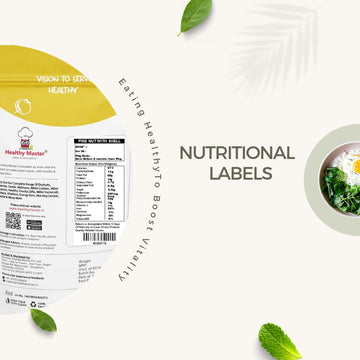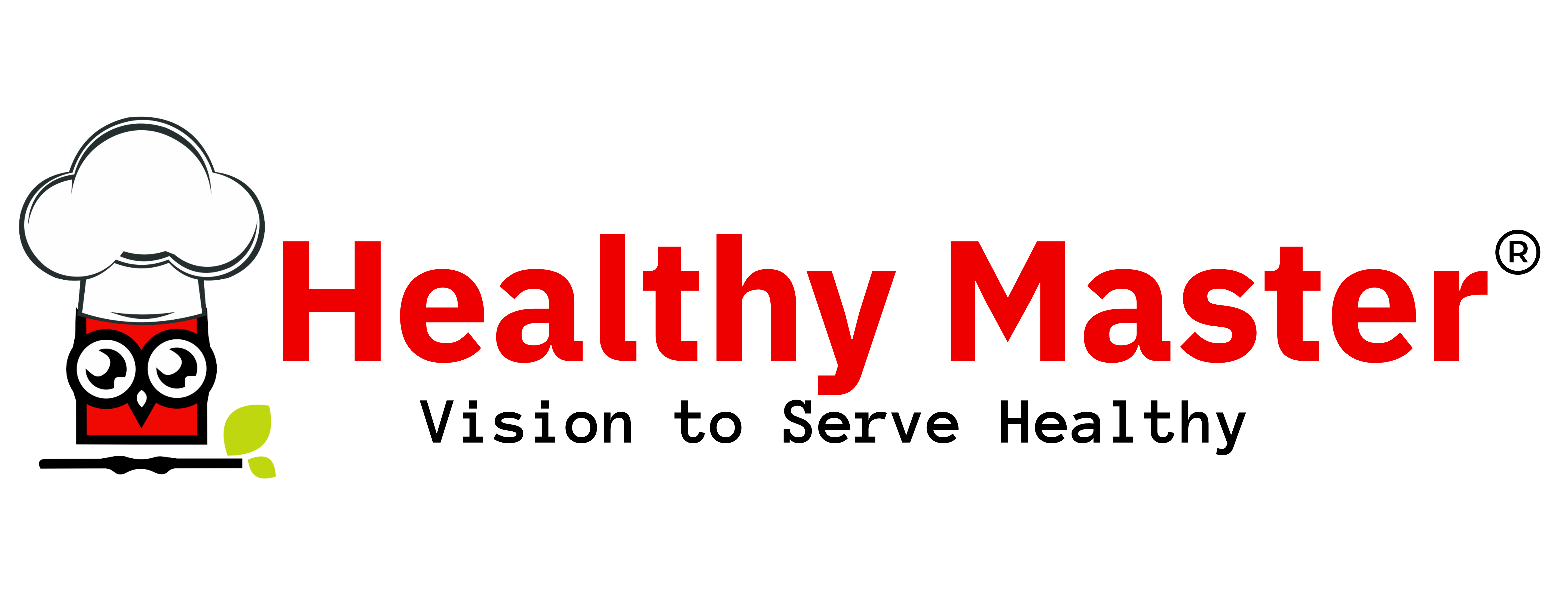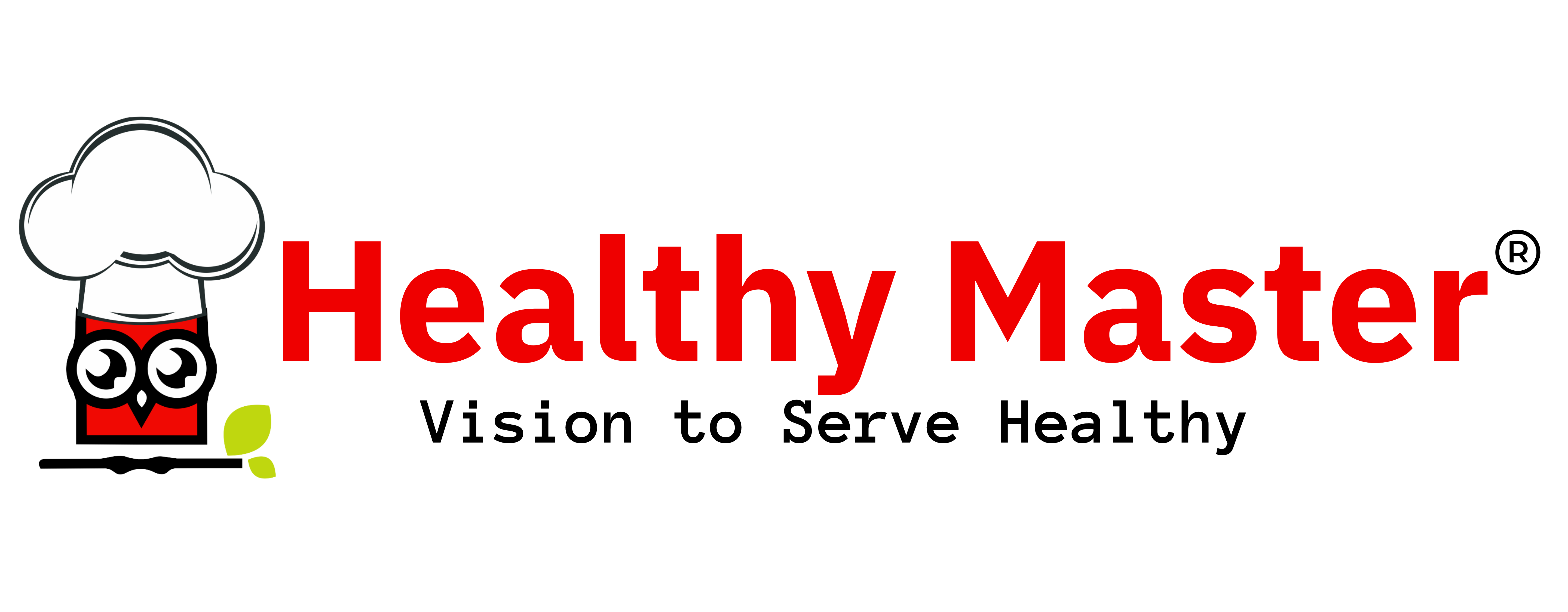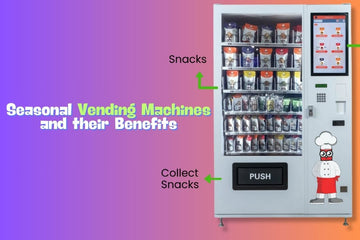
Understanding Nutritional Labels
The nutritional label is a modest but effective tool that may be a friend in helping you make healthier decisions. It can be found in the busy aisles of your neighborhood grocery store, among the colorful packaging and alluring food options.
It's the inconspicuous rectangle on the back of your preferred food items that is jam-packed with crucial details about what you're going to eat. However, for many of us, these labels can be just as enigmatic as an old book written in a foreign tongue.
Have you ever stared at a nutritional label and felt paralyzed by the amounts and percentages? It's not just you. Trying to interpret a nutritional label will definitely help you take control of your diet, live a healthier life, and make health-conscious food choices thus improving your lifestyle.
In this blog, we shall reveal the information and influence that nutritional labels contain.
What Are Nutritional Labels?
Like your personal guides to the world of food, nutritional labels provide information. Almost every packaged item at the grocery store has one of these little panels, and they contain a wealth of knowledge on what is contained inside the box, bag, or can.
Consider this a cheat sheet for making better food choices.
The cheat sheets help break down the different components such as calories, vitamins, fats, and minerals. But the reality is that if you are unaware of how to interpret them, they can appear to be somewhat cryptic codes.
Nutritional labels are fundamentally your resources for deciphering the nutritional worth of a product. They provide information on your calorie intake as well as the different sorts of nutrients (such as proteins, carbs, and fats) and even the less-than-healthy aspects (such as added sugars and sodium).
These labels are more than simply percentages and numbers; they are your guides to choosing nutritious foods. Whether you're managing your calorie consumption, attempting to buy foods that contain greater fiber, or avoiding certain allergens, nutritional labels are there to help you traverse through the aisles and make selections that match your health goals.
Therefore, turn that cereal box over every time you grab a snack or reach for it, and take a second to read the label. It's your top-secret tool for eating well.
The Purpose Behind Nutritional Labels

Establishing Transparency
Nutritional labels are primarily used to provide consumers with clarity. They provide consumers with access to crucial details regarding the nutritional makeup of a food product in a straightforward and uniform manner.
Consumer trust in the food sector is increased by this transparency, which allows consumers to know what they are feeding their bodies.
Educating You to Make Wise Decisions
You can use nutritional labels as allies while choosing healthy foods. They act as your go-to companion, delivering important information about an item's nutrients, portion size, and other characteristics. You can now control your diet while making health-conscious selections that suit your tastes.
Promoting a healthier way of life
The promotion of healthier eating practices is one of the main goals of nutritional labels. They act as a lighthouse, revealing vital information such as calories, fats, and nutrients.
You can now make health-conscious decisions whether they include losing weight or maintaining your balanced diet or sticking by your diet plan.
Taking Care of Dietary Needs and Allergies
If you have food allergies or dietary limitations, nutritional labels can save the day. They are your compass by warning about your potentially unhealthy selections.
These labels emphasize allergens for people with food sensitivity so you may stay away from items that can be problematic.
Accountability for the Food Industry
Nutritional labels are essential for maintaining the integrity of the food sector. They serve as watchdogs, ensuring that producers give correct product information.
This accountability encourages producers to create foods that adhere to nutritional norms, ensuring that you can trust what is printed on the labels.
Helping You Lose Weight
Nutritional labels are critical for the food industry's legitimacy. They act as watchdogs, ensuring that manufacturers provide accurate product information.
This accountability drives producers to create foods that correspond to nutritional standards, guaranteeing that what is put on the labels can be trusted.
Helping you achieve a balanced diet
On your journey to a balanced diet, nutritional labels serve as your navigational aids. They serve as nutritional road signs, directing people in the right direction.
Using % Daily Values (%DV) as a reference, you can make sure you're obtaining the nutrients your body requires for a balanced diet.
Promoting Community Health
Nutritional labels benefit your community's health on a bigger scale. A ripple effect occurs as more individuals make informed dietary decisions, resulting in healthier lifestyles for all.
Reduced incidence of diet-related health problems could result from this, which would be advantageous to both individuals and whole communities.
In Conclusion, Nutritional labels can be useful allies as you make the switch to a healthier diet. They educate you, encourage healthy decisions, and are critical in developing a more health-conscious culture.
Top 9 Details You Would Typical Spot On A Nutritional Label
Serving Size
Your starting point for comprehending the remainder of the label is the serving size. It resembles the base of a nutritious structure. You are informed of the quantity of the product to which the label's information pertains.
Pay attention to this because you'll need to alter the calorie and nutritional values if you consume more or less than the serving size. It's comparable to scaling up or down a recipe.
Calories
The food you eat provides your body with energy in the form of calories. By being aware of the calories in each dish, you may better control your daily energy consumption. This number aids you in regulating your calorie intake whether your goal is to gain weight, maintain your current weight, or shed some.
Macronutrients
Your body needs more of these nutrients than other types. Consider them the lead characters in the nutritional play that is your diet:
Protein: Protein is essential for the creation and maintenance of tissues. Your body is like a construction site, with everything from muscles to enzymes under construction.
Carbohydrates: Carbohydrates provide energy to your body.
They appear in several forms, including starches, sugars, and fiber.
Fats: Fats are required for cell growth and hormone production, among other biological functions. Despite being necessary, they ought to be consumed in moderation.
Fats may be classified on the label as saturated or trans fats, both of which can be damaging to your health if consumed in excess.
Micronutrients
These are the lesser-known members of the nutritional cast, yet they are just as crucial for a variety of biological processes. Here are a few illustrations:
Vitamins: Vitamins are like the backstage crew, making sure everything goes well behind the scenes. For example: Vitamin D promotes your bone health.
Minerals: Substantial functions are played by minerals like calcium and iron. Iron is required for the transportation of oxygen in your blood, whilst calcium serves as the skeleton of your body, sustaining strong bones.
Daily Values in Percent (%DV)
Your point of reference for figuring out how much a serving of the product adds to your daily nutrient intake is the %DV. It functions as a small map that shows where you are in terms of your nutritional journey.
For instance, if a serving is labeled as 15% DV of fiber, it means that eating that serving corresponds to 15% of your daily recommended intake of fiber. It is very helpful when evaluating a food's nutritional value.
Extra Sugars
The secret agents of the food business added sugars frequently go by names like corn syrup with high fructose content or molasses. Even the processed meals you wouldn't expect to be sweet can contain them.
Added sugars are now listed separately on labels, making them simpler to identify. For the purpose of maintaining a balanced diet and avoiding problems like obesity and diabetes, monitoring added sugar consumption is essential.
Salt and Sodium Content
Salt contains sodium, and too much sodium can lead to high blood pressure and other health problems. The amount of salt in each serving is indicated on the label and is usually represented in milligrams (mg).
The %DV enables you to better manage your salt intake by letting you know how much of your daily prescribed sodium intake each item corresponds to.
List of ingredients
The ingredient list is comparable to a behind-the-scenes look at a magic performance. It displays the product's ingredients, presented in decreasing weight order.
Watch out for components like artificial additives, preservatives, or harmful fats that you may want to limit or avoid.
Information on Allergens
People who have food allergies or intolerances must have access to allergen information. Because of this safety net, they can avoid potentially hazardous compounds.
Common allergens, such as almonds, dairy, soy, wheat, and eggs, are frequently emphasized on the label to make it easier for those with allergies to discover and avoid bothersome goods.
Top Products By Healthy Master With Their Nutritional Information

1. Baked Makai Masala Mathri
This mouth-watering snack works great with a warm cup of tea and has an overload of nutrients. Let us look at some of its nutritional information:
Serving Size
You can get a serving size of 250 gms, 500 gms, and 1kg.
Ingredient List
Makai flour- 60%
Whole wheat flour- 30%
Salt
Till
Jeera
Jeera powder
Chilli powder
Amchur
Chaat masala
Turmeric powder
2% Edible Sunflower Oil used for baking purposes only
Nutritional Value: (Per 100g)
Energy - 520 Kcal
Protein- 9 g
Carbohydrate- 62.9 g
Sugar- 1 g
Fat- 23 g
Trans fat- 0 g
2. Baked Soya Chips
These snacks make a delightful and healthy choice over the usual less nutritional fried chips and are packed with health benefits like preventing diabetes and cancer.
Serving Size
You can get a serving size of 100gm, 200gm, 500gm, 1kg.
Ingredient List
Soya bean flour-65%
Urad daal-15%
Rice Flour -5%
Tapioca Starch-10%
Edible Sunflower Oil (sprayed to induce flavor)
Black til
Salt and Spices
Nutritional Values (per 100gm)
Energy (kcal)- 510
Carbohydrates (g)- 58.1
Fat (g)- 27.8
Protein (g)- 6.9
Sugar (g)- 0.00
Fiber(g)- 4.8
Sodium(g)- 0.459
3. Goji Berries
These berries have a very tangy taste to them but are delicious and have a variety of health benefits they are great for your eyes and have a rich supply of antioxidants.
Serving Size
You can get a serving size of 200gm, 500 gm, and 1kg.
Ingredient List
Dried Goji Berry
Nutritional Values-Per 100g
Energy- 330 Kcal
Carbohydrate- 62g
Sugar- 49g
Protein- 10g
Fats- 1g
Fiber- 7g
Sodium- 300mg
4. Millet Balls Peri Peri
These snacks are fused with both nutrients and taste to make your munches a rewarding experience. The best part is that they are low in fats and calories making them a great option to be suited to any of your dietary requirements.
Serving Size
You can get a serving size of 100gm, 150gm, and 300gm.
Ingredient List
Sorghum flour
Corn flour
Rice flour
Edible Sunflower Oil (sprayed to induce flavor)
Salt
Spices & condiments
Nutritional Values: (Per100g)
Energy- 340Kcal
Fat- 1.4g
Carbohydrates- 82g
Proteins- 8.4g
5. Apricot White
The Apricot White has a fruity flavor that makes it a delicious snack and yet a healthy option to select. It comes with benefits like preserving your nerve function and improving your immunity.
Serving Size
You can get a serving size of 250gm, 500gm, and 1kg.
Ingredient List
Apricot White
Nutritional values: Per(100g)
Energy - 323Kcl
Protein- 3.3g
Fat- 0.68g
Saturated fatty acids- 0.18g
Carbohydrates - 74g
Sugar- 63g
Dietary Fiber- 2.5g
6. Baked Bhakarwadi
This snack is a mouthwatering and health-conscious option in comparison with the fried Bhakarwadi. It also has health benefits that involve improved heart health and contains an abundance of iron.
Serving Size
You can get a serving size of 250gm, 500gm, and 1kg.
Ingredient List
Wheat flour- 80%
Gram flour- 15%
Edible Sunflower Oil (sprayed to induce flavor)
Sesame seeds
Black Salt
Green chilly
Sugar- 1%
Coriander powder
Dry mango
Asafoetida
Nutritional value-(per 100gm)
Energy(kcal)- 531
Carbohydrates(g-) 54
Fat(g)- 30
Protein(g)- 10.3
Sugar(g)- 8.3
Fiber(g)- 3.9
Sodium(g)- 0.365
7. Baked Ragi Chips
These chips are great on your tastebuds and come with a lot of health benefits like lowering your blood pressure. They are also antifungal.
Serving Size
You can get a serving size of 100 g, 200gm, 500gm, and 1kg.
Ingredients
Ragi flour -85 %
Tapioca starch -10%
Edible Sunflower Oil (sprayed to induce flavor)
Red Chili
Salt
Nutritional values (per 100gm):
Energy(kcal)- 424
Carbohydrates(g)- 78.12
Fat(g)- 8.67
Protein(g)- 6.2
Sugar(g)- 0.00
Sodium(g)- 0.380
Fiber(g)- 5.6
8. Makhana Pudina
This snack definitely contains a lot of delicious ingredients that are packed with health benefits including folate which works great for pregnant women and more.
Serving Size
You can get a serving size of 80 g, 120gm and 240gm
Ingredient List
Plain Makhana
Salt
Sugar
Nutritional Value: (per 100g)
Energy- 498 Kcal
Protein- 7.5g
Carbohydrate- 60g
Sugar- 10.3g
Fat- 25.3g
Saturated Fat- 9.4g
Trans Fat- 0g
9. Millet Bhel
This snack is another delicious snack that offers an overload of health benefits like pumping your body with fiber and being able to control diabetes.
Serving Size
You can get a serving size of 150g and 300g.
Ingredients
Roasted Chana
Jowar Puff
Bajra Puff
Edible Sunflower Oil (Sprayed to induce flavor)
Salt and other spices & condiments
Nutritional Value (per 100g approx)
Energy- 402 kcal
Carbohydrates- 54 g
Total Fat- 14 g
Protein- 21 g
Cholesterol- 0 mg
10. Cranberry Slice
If you are a fan of cranberry juice, then consuming this dry snack is definitely a healthy choice in your diet and also helps improve the health of your kidneys and your oral health.
Serving Size
You can get a serving size of 250 g, 500 g, and 1kg.
Ingredient List
Dried Cranberry Slice
Nutritional Values: (Per 100g)
Energy- 350 Kcl
Total fat- 0.59g
Cholesterol- 0.84mg
Sodium- 19g
Carbohydrates- 88.4g
Dietary Fiber- 4.97g
Sugar- 17g
Protein- 1.32g
Calcium- 14 mg
Iron- 0.61mg
Vitamin A- 32 IU
Conclusion
Nutritional labels act as a beacon of light in a world full with enticing food options. They provide transparency, allowing you to make informed food decisions.
These labels do far more than simply provide numbers; they aid in the promotion of healthier eating habits, the accommodation of dietary variations, and the accountability of the food business.
By understanding the data on these labels you can promote a healthier diet by taking control of your choices.
Take a moment the next time you go grocery shopping to interpret the nutritional labels on your preferred products—it's your first step toward a better, more aware lifestyle.
Frequently Asked Questions
What is the significance behind nutritional labels?
Nutritional labels provide you with essential information about the product about your purchase by ensuring that you make informed and health-conscious decisions.
How may nutritional labels assist those who have special dietary limitations or preferences?
They work well with people who follow a certain diet plan. It can be anything from a gluten-free diet to a Keto diet.
Why is a transparent food business vital, and how can nutritional labels help?
Transparency fosters consumer trust by providing accurate information about food goods, creating trust in what people eat. Healthy Master ensures that its customers are provided with products that are health-conscious and ensures that their clients are well-informed about what goes into the making of their products.
Can nutritional labels aid in weight loss?
Yes, they help with calorie control and selecting healthier meal choices for weight loss.







